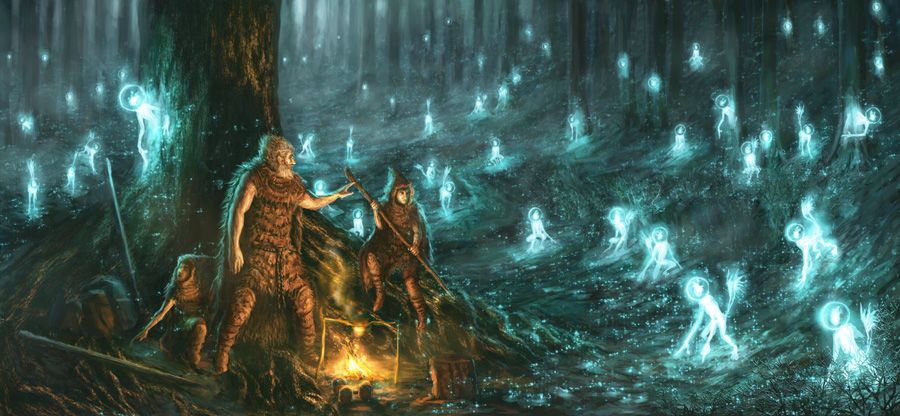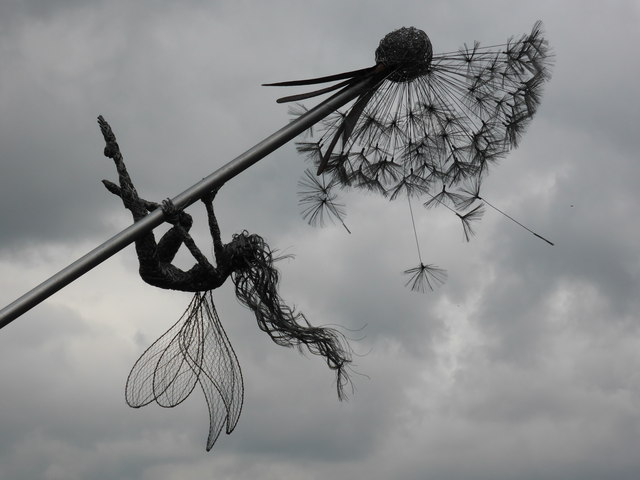
They say the world is bound by two powerful forces that co-exist to create balance: the good and the evil, the light and the dark. Most of the stories we hear or read also obey this set up in order to make the whole plot convincing and believable. Even outside of fiction, the duality of good and evil has a strong drive in one’s life regardless of his or her beliefs. Like stories, these forces make our existence harmonized despite our tendency to try and rid ourselves of them.
The term Engkanto is usually considered as a collective title to all the supernatural beings from Philippines mythology and lore. From its etymological definition which is “enchant” or ‘charmed”, many will think that Engkantos are beings who either trick you, bring some misfortune or invoke harm to anyone who cross their path.
Yet not all of them belong to the so called ”dark side”. Beyond the predatory Aswang and malady giving Duwende, some Engkantos are agents of good and known to aid man whenever they seek help.
Duality Among Engkantos
In the book of Jaime T. Licauco called “Dwarves and other Nature Spirits: Their Importance to Man”, he stated that there is a belief that engkantos are divided into two classes: the Engkanto De Dios, baptized creatures who are working with God and help man in different ways such as preserving the balance of nature, and the Engkanto De Diablo, the unbaptized ones who bring harm to man by possessing their bodies or making them sick.
These categorizations obviously have a strong influence from Catholicism through the usage of the words “Dios” (God) and “Diablo” (Devil) and also the inclusion of the concept of baptism. Due to the introduction of Christian doctrines, our ancient religion transformed into a syncretic system of belief. Now, the duality of good and evil has been given more emphasis and consequently the mythical beings from our lore and myths were also affected.
Our nature spirits, who were originally neutral in disposition, underwent categorization. Some have been “demonized” while others luckily retained some semblance their original identity. Those ethnic groups who were not entirely influenced by Western beliefs managed to preserve some of the true nature of these beings within their animist beliefs.
Regardless of the changes that happened with the intricacies of Engkantos, let us now explore some of the beings who are known for their function to protect and preserve nature itself and to help their human counterparts based from the lore of our ancestors.
The Guardians
As nature spirits, Engkantos serve as the unseen guardians of flora and fauna as well as the other creatures. An example is the Makaboteng who guards deer and wild boar in the forest. The name Makaboteng means “the one who scares or frightens” which seems appropriate for this creature as the one who scares hunters who dare to trespass in its forest. The Makaboteng is also invoked in rituals to make the dogs of the hunter have a successful chase.
The Pamahandi are the 10 spirits from Bukidnon lore that protect carabao and horses. Their names are Pamahandi Puti, Pamahandi lansion, Pamahandi biohon, Pamahandi sigolon, Pamahandi hagsalan, Pamahandi bonau, Pamahandi opos, Pamahandi logdangon, Pamahandi komagasgas and Pamahandi Somagda. These ten hold different duties according to a Bukidnon tale. They also serve as the guide for those who weave and are the caretaker of people’s treasures.
In Bagobo myth, a mysterious spirit called Tahamaling guards the forest and the animals within. It is depicted as a female being with red skin. Dr.Maximo D. Ramos indicated that the Tahamaling counterpart is the Mahomanay, which is a fair skinned male spirit of the forest.

From Ilongo beliefs, a dwarf like being called Lampong took the guise of a one eyed white deer to lure hunters away from other animals. Its true appearance is a small old man with a single eye and nostril.
Helpers of Man
Some Engkantos serve as familiars for Babaylans which are invoked for assistance during rituals. From the Visayas, a creature called Daligmata is called by the Babaylan in a ritual called gudguden to help them seek the disembodied spirit of those who are sick and bring it back to their host. They also help in finding lost items and even souls who are snatched away by other engkantos. Daligmata are described as an animal with many brilliant eyes covering its body. It appears only at night.
A strange Engkanto called Kokok from Subanen beliefs are widely known to possess knowledge about herbal plants. The Babaylan seek their help to cure ailments like colds, stomachache and even those who are afflicted by the curse of a Mangkukulam. Kokok have a pointed head and love to laugh.
From the book “Way of the Ancient Healer: Sacred Teachings from the Philippine Ancestral”, a being called Sangkabagi is the one who gives the power of healing to man. Sangkabagi are usually portrayed as beautiful beings that ride floating bancas at night to transport the souls of the dead. Some even believed they distribute medicine for the sick during their nightly rounds.
Lastly the Tonong are spirits who have different guises and oftentimes help people. They usually assist heroes by taking the sadness and anger from their heart and also guide them during battle. They are found in the epic of Darangen

Seekers of the Lost
Other engkantos are adept at finding lost things which is why some people appease them for their invaluable ability. One of these is the Palasekan who, in Ilongo lore, communicate to men through their whistle. They also use this to warn others of incoming danger that they might encounter during their journey.The Palasekan dwell in trees, but each person is thought have their own who act as their guide. They are also known to have the ability of prognostication.
Another one is the Aghoy, a race of small creatures who love to befriend humans. They are known to have fair skin and yellow hair. Besides finding lost items, they are also known to give a purse full of gold to people they are fond of.
Although not an Engkanto, the pre-colonial Tagalogs gave offerings and prayers to a goddess called Anagolay. She is one of the major deities in that pantheon wherein she is responsible in seeking lost items.
Good,Bad or Amoral?
When the existence of heaven and hell was integrated in our animistic beliefs, the forces of good and evil became the main axis that turned the wheel of our spirituality. The advantage of this change is that it can serve as a common compass for morality and values to be reinforced. However, it also comes with unexpected drawbacks. The alteration to our mythology and beliefs were drastic and ultimately created challenges in our current understanding towards our culture. This impacts our identity as Filipino.
Let us put an emphasis on the fact that Engkantos were nature spirits in the beginning and nature is something that is neither good or bad. At the end of the day, it is man’s function that defines what is good or what is bad. We tend to label something good when it is beautiful or something that we can benefit from, and evil when it is ugly, monstrous or causes harm.
Perhaps it’s also safe to assume that besides the laws of good and evil, these beings, like humans, are also subjected by the simple rules of respect; if we treat them right they will repay it with kindness. Yet it’s another story when we don’t give any respect to them or their environment.
One thing that should matter more than understanding these dual forces is how we personally define what is good or evil. Is it something we are told by institutions, or should we decide for ourselves.
References:
Dwarves and other Nature Spirits: Their Importance to Man by Jaime Licauco
Way of the Ancient Healer: Sacred Teachings from the Philippine Ancestral by Virgil Mayor Apostol
101 Kagila-Gilalas na Nilalang by Edgar Calabia Samar
The Creatures of Philippine Lower Mythology by Dr. Maximo D. Ramos
Encyclopedia Mythica (Pantheon.org)
http://jarsandsaddlebags-summer.blogspot.com/2011/08/philippine-folklore-engkanto-beliefs.html
The Spirits of the Philippine Archipelago
ALSO READ: ENGKANTO & ANITOS: Could Science Be Close To Proving They’re Real?
Currently collecting books (fiction and non-fiction) involving Philippine mythology and folklore. His favorite lower mythological creature is the Bakunawa because he too is curious what the moon or sun taste like.


